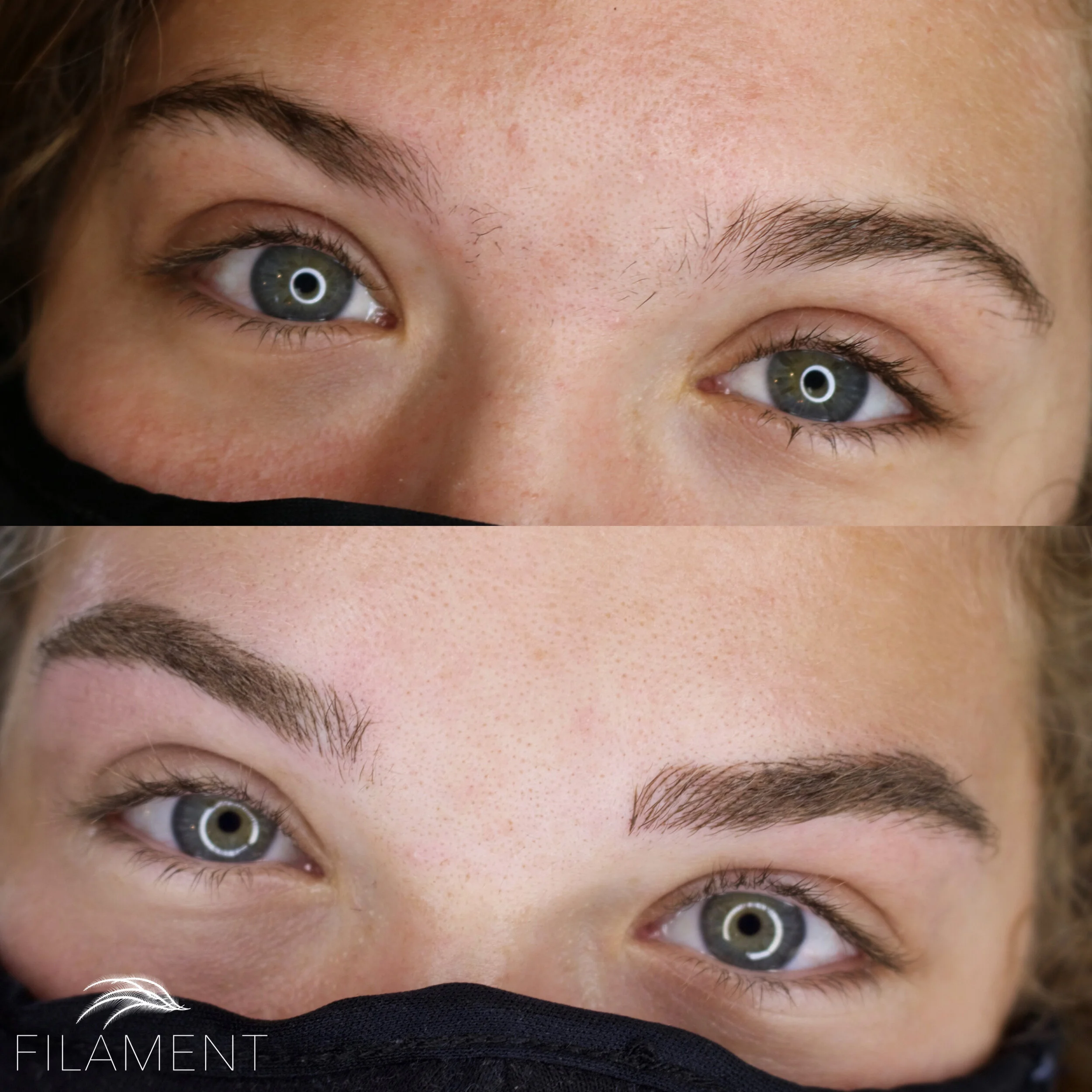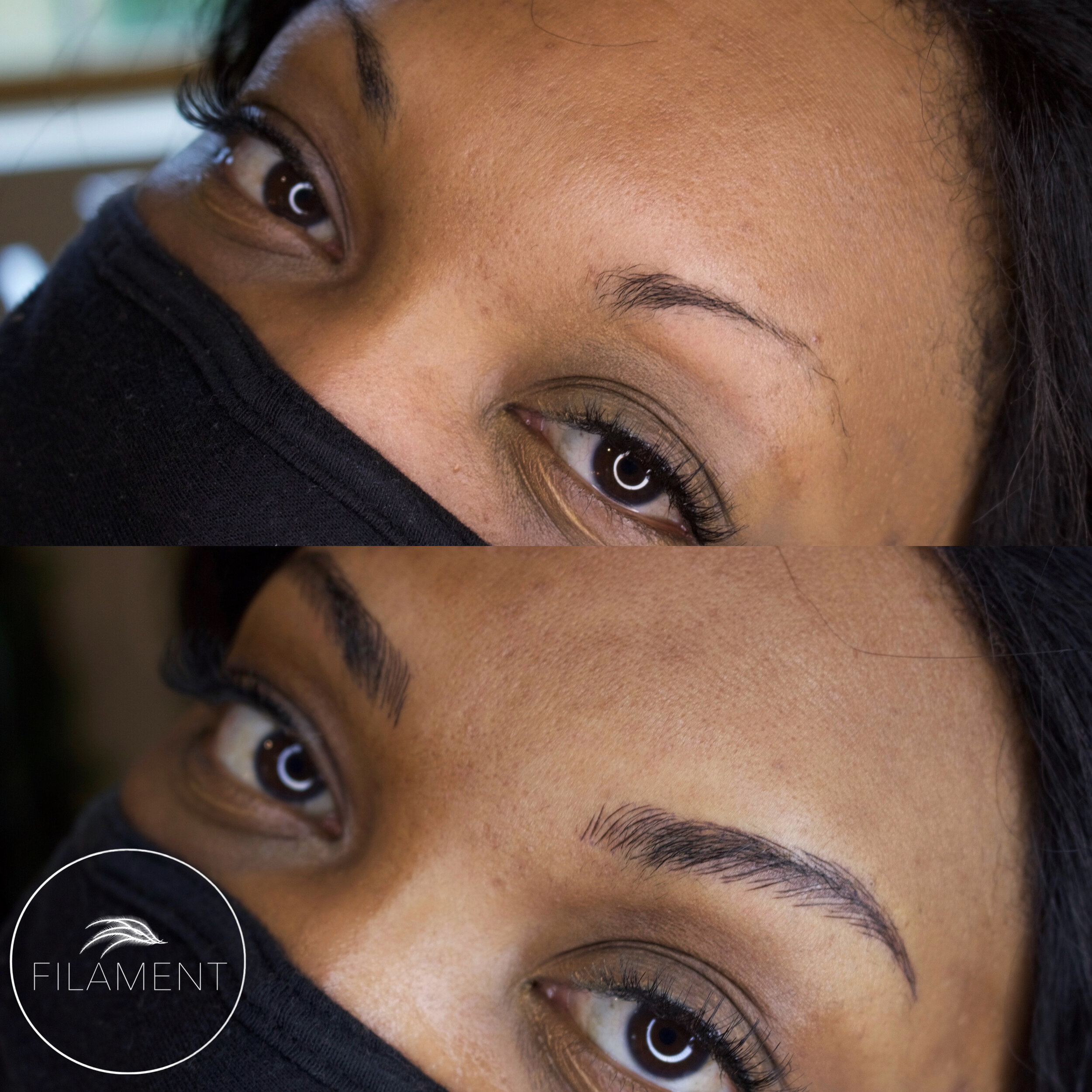This technique is created with machine shading (as light or dark as desired) throughout the entire brow (ie. no strokes!). This is THE best option for oily skin. The needle used here for shading can either be a single needle, although larger than the needle used in machine strokes (example: .3mm vs. .18mm), or a group of needles in rows or in a circle.
Summary
Tool(s): single needle or row of needles with machine
Skin Type(s): all, especially great for oily skin
Longevity: annual touch-ups are recommended but sometimes this style can last up to three years depending on lifestyle and skin type
Pros: amount of shading can be customized to your preferences (light, medium, dark), the powdery pixelated makeup look is so delicious, lasts longer than microblading
Cons: no hair strokes, but that’s not necessarily a bad thing if the powder brow is done well :)
So now that we’ve covered the range of microblading types out there, which is your favorite?
I personally love them all, and I love creating customized looks for each lovely client. That’s where the true art comes in and I adore making each set of brows unique to your face.

















